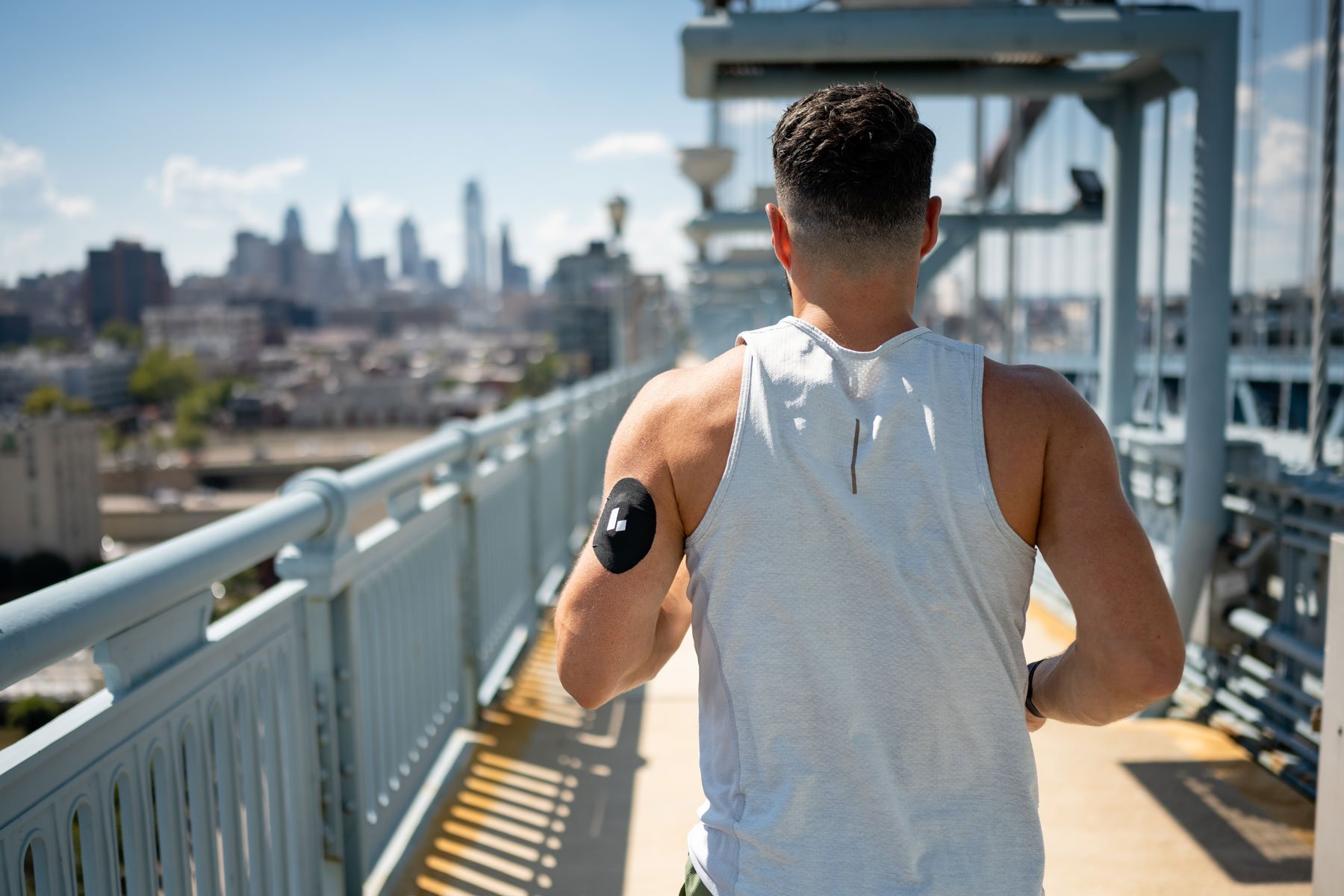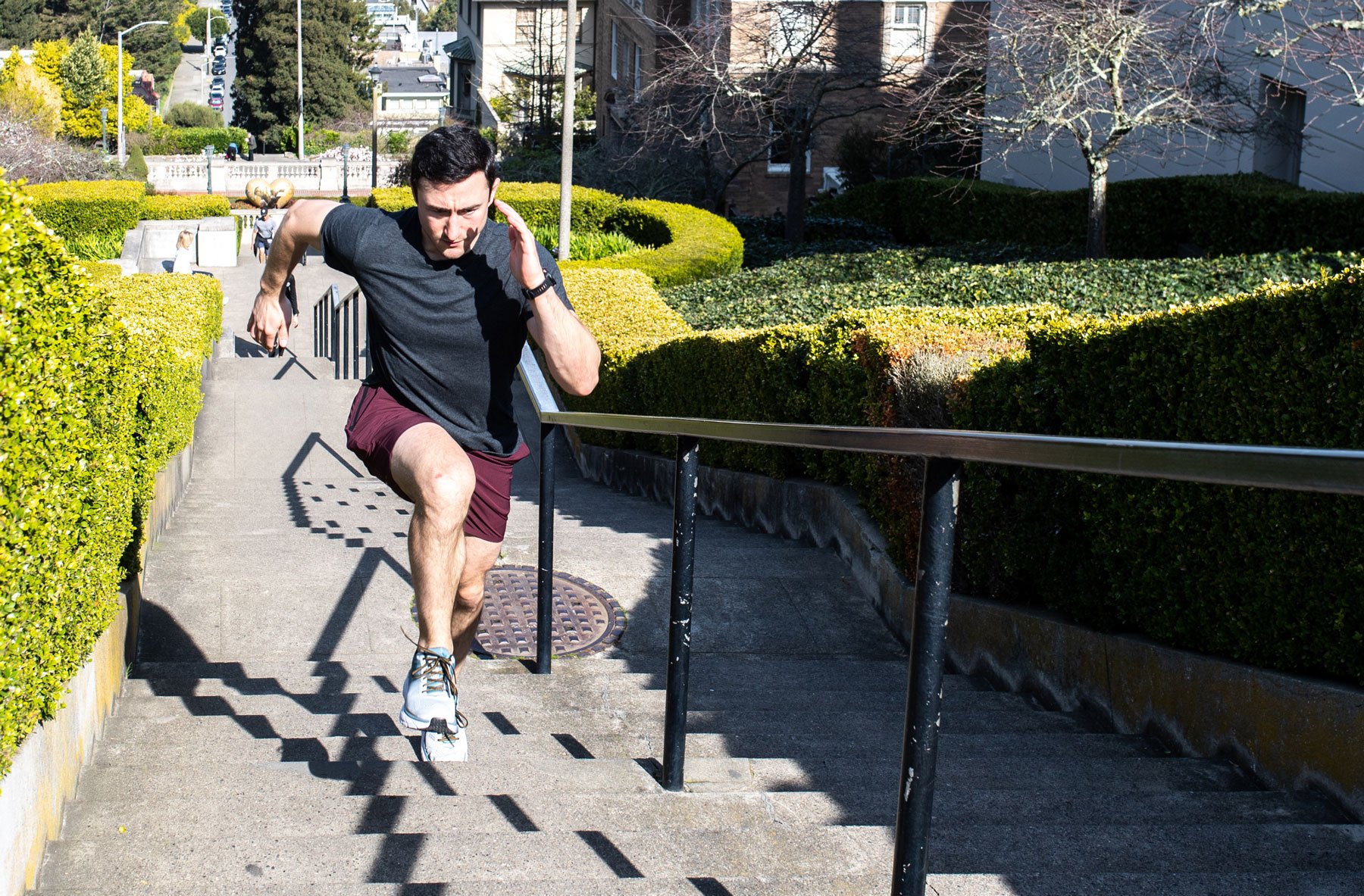When you’re walking, thinking, talking, running—even just reading this sentence—your body is using fuel to keep you going. Your metabolism makes sure you don’t run out of gas.
Metabolism describes how your body uses different substances—mostly fats and carbohydrates—and a dizzying number of steps to convert those substances to energy for your cells. And while you may think of exercise as burning energy, it actually helps the energy-converting pathways work better.
“With exercise, the pathways are working together in a more efficient way,” says Matthew Laye, Ph.D., associate professor at the Idaho College of Osteopathic Medicine. The different processes by which your cells turn fats and carbs into energy are more seamless in the short- and long-term. So your metabolism runs more smoothly, Laye says.
That smooth, efficient machinery is a sign of good metabolic health. And that’s huge: Metabolic health is the foundation of overall wellbeing, impacting not just your energy throughout the day, but also your mood, memory, sexual health, immune system functioning, and your ability to fight off chronic diseases like heart disease, diabetes, and cancer.
Exercise makes it all work better. Here’s how, and how you can start unlocking the power of sweat to improve your body’s energy-making machinery.
How Exercise Impacts Metabolic Health Markers
Your metabolic health is defined by the levels of five markers: fasting triglycerides, fasting high-density lipoprotein (HDL) cholesterol, waist circumference, blood pressure, and fasting blood sugar. When this quintet of measurements is in optimal ranges without medication, you’re said to be “metabolically healthy”—all your metabolic systems are working smoothly to make energy for your cells.
When three of the five markers are all in the danger zone, it’s called “metabolic syndrome,” a condition associated with an increased risk of cardiovascular disease, including a two- to four-fold increase in the risk of stroke and tripled risk for heart attack. People with metabolic syndrome are also at an elevated risk for diabetes.
Exercise helps improve all five markers of metabolic health:
Triglycerides:
- What they are: The most common type of fat in your body. When you eat excess calories, your body stores them as triglycerides.
- How they impact health: Elevated levels of triglycerides in your blood—above 150 mg/dL—are associated with increased risk of cardiovascular disease. In some populations, the risk is worse when high triglycerides are paired with low HDL cholesterol. In women over 65, for example, one study found that this pair of risk factors more than tripled the risk of cardiovascular disease. Elevated triglycerides are also tied to insulin resistance, the condition underlying Type 2 diabetes.
- Impact of exercise: Studies have found that people who are more active have lower triglyceride levels. Resistance training has been shown to lower these levels, and higher-intensity cardio activities were found in a 2013 study to provide more benefits than moderate-intensity cardio.
High Density Lipoprotein (HDL):
- What it is: Although there are still questions about HDL’s role in cardiovascular disease risk, it’s generally considered beneficial, in part because it sweeps up the cholesterol in LDL particles in the bloodstream and carries it away. This helps keep LDL from building up along the artery walls, leading to clots that can cause heart attack.
- How it impacts health: Low levels of HDL—often defined as less than 40 mg/dL in men and 50 mg/dL in women—are associated in studies with increased risks of death from for cardiovascular disease.
- Impact of exercise: Exercise improves the amount of HDL in the blood both in the short- and long-term, and recent evidence suggests that exercise may make HDL more efficient.
Waist Circumference:
- What it is: A measurement of the waist, taken just above the hip bones. A circumference greater than 40 inches for men or 35 inches for women is a risk factor for cardiovascular disease and diabetes.
- How it impacts health: A larger waist circumference indicates storage of visceral fat—a deep, hard type of fat that’s more commonly associated with disease risk than subcutaneous fat, which is closer to the surface of the skin. Visceral fat contributes to insulin resistance, a condition where insulin can’t do its job clearing blood sugar (increasing the risk for diabetes). It is also related to increased risks for certain types of cancer and Alzheimer’s—inflammatory chemicals released by this type of fat may contribute to the disease.
- Impact of exercise: Losing weight reduces weight circumference, but exercise specifically helps. In a year-long study of more than 600 people, those who lost weight while following an exercise program, eating an “energy-restricted Mediterranean diet,” and attending dietary education saw greater reductions in waist circumference than those who lost weight with dietary education alone.
Blood Pressure:
- What it is: The force of your blood pressing against the walls of your arteries as it flows through them. Blood pressure consists of two numbers: The systolic pressure (top number) is a measurement of the force exerted on your arterial walls when your heart beats. The “bottom number” is diastolic pressure, which is the pressure your blood exerts between beats.
- How it impacts health: When someone has systolic pressure over 130 mmHg and/or diastolic pressure over 80 mmHg, they have hypertension, or high blood pressure. People with hypertension are at increased risk for heart attack, stroke, and death.
- Impact of exercise: Regular exercise lowers both blood pressure numbers: A review of 27 studies found that regular medium- to high-intensity aerobic exercise reduced systolic pressure by an average of 11 mmHg and diastolic pressure by an average of 5 mmHg.
Fasting Blood Sugar:
- What it is: A measure of how much glucose is circulating in the blood at rest.
- How it impacts health: Chronically elevated blood glucose can lead to insulin resistance, a condition where your cells stop responding to the insulin that’s secreted by your pancreas, signaling them to process glucose. When your resting blood glucose is chronically high, or you have frequent severe flucutations, you’re at an elevated risk for diabetes.
- Impact of exercise: Exercise has been associated with better glucose control. See the next section for more.
Exercise’s Impact on Glucose
Your cells make most of the energy your brain and body need from fats and glucose, a form of sugar. When you eat carbohydrates, your body breaks them down into glucose, adding to the concentration of this energy source in your bloodstream. This glucose is absorbed into your cells to be used to produce adenosine triphosphate (ATP), the type of fuel used for cellular processes. Your cells take in glucose for ATP production through multiple processes. Some of them—called insulin-independent pathways—don’t require insulin. Other glucose intake is triggered by insulin, a chemical messenger molecule released by your pancreas.
“If I just had a piece of pizza, my blood glucose will go up,” Laye says. “In response, my pancreas releases insulin, and that insulin will then signal the skeletal muscle to pull the blood glucose into the muscle.”
But if the increase in blood glucose from a meal is too high, your cells aren’t able to pull in all of the sugar, and the excess can end up being stored as fat. What’s more, when glucose levels are consistently elevated, the pancreas pumps out lots more insulin, eventually wearing out and becoming less effective at releasing insulin. At the same time, cells can become numb to insulin’s effects—a condition called insulin resistance, or lowered insulin sensitivity. Insulin resistance is associated with many chronic diseases, including heart disease, infertility, diabetes, and Alzheimer’s.
Keeping glucose levels in a healthy range—between 70 to 140 mg/dL for most of the day—can benefit all the markers of metabolic health. And exercise can help your body process more blood glucose to keep it in those healthy ranges in the immediate and long-term.
Short- and Medium-Term Impacts
When you perform any type of exercise, protein molecules called glucose transporter 4 (GLUT4) are moved from inside the cells to their edges. These transporters act—and are shaped—like tunnels, creating a pathway for glucose to move from the bloodstream into muscle cells without the need for more insulin.
There’s something else at play, Laye says, that scientists are still researching—the amount of excess glucose exercising muscles can take up. “We don’t know what mechanism allows a doubling of the number of the transporters to lead to potentially 100 times as much glucose entering the cell [than at rest].”
One study found that after an average of 12 minutes of exercise, more than 80 percent of metabolites in the blood—molecules associated with metabolic processes—had changed. Of note, glutamate, which is associated with insulin resistance, dropped by 29 percent.
Exercise also makes you more insulin sensitive in the hours and days after the workout ends. In one study from 2013, the effects of moderate exercise (walking) on insulin sensitivity lasted for 24 hours, and they may last up to 72 hours.
Long-Term Impacts
The impacts of regular exercise in the long term are more powerful:
- More mitochondria: These organelles, called the “powerhouses of the cell”, produce most of the ATP your cells need, using glucose and fats to do so. When you exercise, your body makes more mitochondria—meaning it can use more glucose to make more ATP.
- Liver metabolizes glucose more efficiently: This can reduce glycemic variability, the amount that your blood glucose varies intraday and from day to day. Reduced glycemic variability is one factor that promotes metabolic health.
- Improved insulin sensitivity: Studies have found that this improvement occurs even if you don’t lose weight: In a small 2004 Czech study of 10 insulin resistant men, those who did three months of strength training improved their insulin sensitivity even if they didn’t drop any pounds. A 2005 study on aerobic exercise in overweight and obese adolescent women had similar results: Twelve weeks of exercise, performed three times per week for 40 minutes in each session, improved insulin sensitivity whether or not the subjects lost weight. Larger studies have found that the best improvements come when both types of training are combined.
- More glucose transporter molecules: While acute exercise moves more GLUT4 transporters to the edges of cells, regular exercise increases the number of these transporters in the body, increasing the overall potential for glucose uptake in the long-term.
How Different Exercises Types and Timing Impact Metabolic Health
Any type of exercise will improve your metabolic health. But exercising at certain times and in certain ways can provide some unique metabolic adaptations.
Fasted Exercise: Improves HDL, and Maybe Insulin Sensitivity
Exercising on an empty stomach—before breakfast, for example—may provide some metabolic benefits.
In a research review from 2021, scientists found that people took in more glucose and increased insulin sensitivity more when working out in a fasted state than when exercising after a pre-workout meal. One possible reason: Fasted workouts moved more GLUT4 transporters than fed workouts did.
The authors also suggest that fasted workouts could lead to longer-term metabolic changes, including a greater remodeling of muscle as it relates to glucose uptake, but more research is needed.
One benefit could be for your “good” cholesterol: In a 2011 study of physically active men observing Ramadan, those who performed aerobic exercise in a fasted state increased their HDL levels by 27.3 percent in a month; participants who did cardio while fed during the same period did not increase their HDL levels. It didn’t work for strength training, though: A similar study on resistance training from 2013 found no difference in HDL increase between fasted and fed lifting during Ramadan.
In a January 2023 study of overweight and obese young adult males, those who exercised in a fasted state improved their resting fasting insulin levels and increased insulin sensitivity more than for those who exercised in a fed state.
Fasted endurance training leads to some short-term effects on metabolic health—like breaking down stored fat tissue, and increasing your body’s ability use fat for fuel during exercise—that scientists theorize could lead to long-term improvements in insulin sensitivity, but more research is needed.
Post-Meal Walks: Blunt the Glucose Spike
After a meal, your blood glucose levels rise—more sharply and higher if you ate a higher-carb or sugar-laden meal. But you can reduce the variability in your blood glucose levels with a post-meal walk.
Many studies have examined the glucose-balancing effects of different walking durations and moderate physical activity after eating in different populations. Some specific findings include:
- For people with diabetes, going for a 20-minute walk 15-20 minutes after a meal was shown in a 2009 study to lower blood glucose levels when compared to walking before a meal or not walking at all.
- A 2016 review of 39 studies found that a 60-minute walk (or a 20-30 minute session of moderate-intensity cardio) performed 30 minutes after eating decreased glucose and insulin levels in the hours after a meal.
- One meta-analysis from 2022 found that walks as short as two minutes long performed every 20 minutes throughout the day reduced post-meal blood glucose and insulin spikes compared to sitting or taking a standing break of the same duration.
The bottom line: Walking after eating—for 30 minutes within 6 hours of the meal—is a good standard for healthy people, though sooner is likely better. Alternatively, just walking briskly for a few minutes every half hour has significant benefits on overall daily glucose and insulin levels. Another healthy habit: Set a timer for every half hour to remind yourself to get up for just a minute or two to move.
Medium Intensity Zone 2 Cardio: Improves Mitochondria and Insulin Sensitivity
Zone 2 cardio is performed at an intensity that’s not too easy, but not too hard—it’s done right at the point where you can barely continue to hold a conversation. This level of effort—which can be a brisk walk or a light jog, depending on your fitness level—can be sustained for a long period of time while being easy to recover from.
This allows exercisers to pile up more minutes of glucose-using, aerobic fitness-improving activity than they could with more intense activity. And doing more overall matters: Studies suggest that the longer you’re able to train, the more glucose-processing mitochondria your body appears to build.
Zone 2 training also boosts insulin-independent glucose uptake. In a study from 2021, for example, scientists found that 60 minutes of this type of cardio increased these processes by 67 to 97 percent in both people with Type 1 diabetes and people without diabetes compared to when they were at rest.
Strength Training: Releases Beneficial Metabolic Proteins
Strength training to build new lean muscle mass can improve the function of mitochondria, build more GLUT4 transporters, and decrease insulin resistance. In one study of more than 6,000 men, those who reported that they didn’t strength train were 2.4 times more likely to be insulin resistant than respondents who performed one to two hours of strength training per week. Increases in skeletal muscle mass have been associated with lower levels of insulin resistance: In a 2011 analysis of data from more than 13,000 subjects, scientists found that for every 10 percent increase in muscle mass, there was an 11 percent reduction in insulin resistance.
Resistance training also promotes the production of chemicals called myokines, proteins that interact with other hormones in your body. Some of these myokines are specifically related to metabolic health and functioning:
- Fibronectin type III domain-containing protein 5 (FNDC5), a myokine associated with skeletal muscle mass, is a precursor of a chemical called irisin. Irisin turns pro-inflammatory “white fat” into more metabolically active “brown fat”, which increases your metabolic rate at rest.
- Strength training increases levels of interleukin-6 (IL-6), a myokine that promotes glucose uptake and fat burning and improves insulin sensitivity.
HIIT: Go Fast to Decrease Fasting Glucose
In high-intensity interval training, or HIIT, you alternate short bursts of intense exercise with periods of lower-intensity work or rest. Though it’s best to only do these types of workouts two or three times a week, they are lauded because it fits a lot of workout into a short period of time.
Performing a HIIT session can also cause a blood glucose spike. High-intensity exercise is anaerobic—it uses up fuel so quickly that oxygen can’t be delivered to the muscles. To make ATP in anaerobic conditions, the body uses glucose, both from the blood and from glycogen (glucose that’s stored in the muscles and liver).
When you do HIIT, levels of a chemical called catecholamine cause the production of glucose to increase by seven to eight times. But you’re only using three to four times as much glucose as at rest, so there’s a short-term spike in blood glucose.
In the long term, though, HIIT improves some markers of metabolic health. In a meta-analysis of 65 studies from 2017, performing HIIT sessions for 12 or more weeks improved waist circumference and systolic blood pressure. The authors concluded that overweight or obese individuals could benefit from performing three sessions of HIIT each week for 12 weeks.
In shorter studies from the review (lasting less than 12 weeks), fasting blood glucose levels were also reduced. The reason for these improvements were not fully known, the authors said, but they theorize that the blood glucose benefits could be a result of increased activation of AMP-activated kinase (AMPK), which increases the movement of GLUT-4 transporters. They also suggest that the blood pressure benefits could be due to increases of endothelial nitric oxide. When this chemical is in greater supply, blood vessels are better at widening, which reduces blood pressure.

How can CGM help improve exercise performance?
Metabolic health expert Dom D'Agostino, PhD, shares four ways real-time glucose data can help make you a better athlete.
Read the ArticleHow Changes in Body Composition Impact Metabolic Health
Exercise also changes how your body looks—it can add muscle and strip off body fat. This isn’t just cosmetic: These changes can have dramatic impacts on your metabolic health.
Exercise Reduces Visceral Fat
Even if you don’t lose weight, regular exercise can result in a loss of visceral fat. This deep, hard fat wraps around organs and contains inflammatory cells that can drive inflammation and contribute to downstream conditions, including insulin resistance, diabetes, and and potentially even Alzheimer’s disease. Even people who aren’t overweight can have excess visceral fat.
The good news: All kinds of exercise positively impact how much visceral fat you store around your middle. In one study of obese young women, those who did moderate-intensity cardio or HIIT training both lost visceral fat at similar rates. Other studies have found improvements in visceral fat and total body fat percentage from strength training interventions. And in a study comparing the effects of aerobic exercise, strength exercise, or both while losing weight, all three strategies reduced visceral fat, though a combination of aerobic and strength exercise was the most effective.
Exercise may also change some of the fat in your body into more metabolically active “beige fat” while at the same time activating brown fat. Brown fat has more mitochondria than visceral “white fat”, so its cells use more glucose, and its presence is associated with glycemic control. The “beige-ing” of white fat may occur in part due to the exercise-induced release of myokines through both strength and endurance exercise.
Exercise Increases Muscle Mass
In addition to the myokine release, more muscle mass means more cells with more mitochondria—which can use more glucose and store it as glycogen. And you can build muscle not just through strength training, but cardio exercise, too: In a 2014 research review from Exercise and Sports Science Reviews, scientists concluded that for sedentary and older individuals, cardio exercise could build similar lower body muscle as resistance training when performed 4-5 times per week at sufficient intensities for 30 minutes or more.
More muscle tissue also means more glucose transporters—the GLUT4 transporters move to the surface of cells when you exercise and GLUT1 transporters, which are responsible for bringing glucose into cells when at rest.
Muscle mass can also increase insulin sensitivity in the presence of fat. In one study, participants with the highest amount of muscle mass underneath visceral fat deposits had 45 percent better insulin sensitivity than the participants with the lowest muscle mass.
Here’s What to Do
Becoming a regular exerciser who reaps all these metabolic benefits doesn’t have to be complicated. “Walk, and do bodyweight exercises—most days of the week,” Laye says.
He has three suggestions:
1. Walk 45 minutes to 1 hour, three to four times per week
It’s ideal to walk after every meal, but any type of sustained walking has been shown in studies to improve glycemic control over a 24-hour period.
Want to step it up a level? Try adding weight to your walk. Called “rucking,” this military-inspired way of moving will help you burn more calories as you stroll. Simply add some weight to a backpack—Laye suggests starting with around 5 percent of your body weight—and wear it as you walk.
2. Do some kind of bodyweight strength work three to four times per week
In a review of 16 studies published in the British Journal of Sports Medicine, scientists found that strength training is associated with a 10 to 17 percent decrease in the risk of early death on its own. When combined with aerobic exercise, the two types of exercise work together to reduce mortality risk by 40 percent.
The scientists found that for every 10 minutes of additional time spent doing these exercises, the protective benefit was increased, with the risk reduction topping out at 140 minutes. You could perform that much in two sessions per week, but 3-4 sessions of around 30 minutes is more manageable.
To do this, you can consult with a trainer at a local gym to build a series of bodyweight exercises, perform a circuit around the gym’s strength training machines, or follow along with an app or other workout online. Just “pick something you enjoy, and will continue to do,” Laye says.
Want to step it up a level? Improve your balance, Laye suggests, by incorporating single-leg exercises into your workout instead of all double-legged moves. For instance, he says, instead of performing two-legged squats, try lunges.
3. Perform some flexibility or mobility exercise at least once per week
According to a 2020 study from Preventive Medicine Reports, more than 40 percent of U.S. adults sit for 8 or more hours per day. This can lead to a loss of joint mobility: According to a 2021 study, people who sit for more than 7 hours per day can lose 6 degrees of motion in their hips compared to people who sit for less than 4 hours per day. Reduced range of motion in the hips can not just make you feel stiff, but it can impair how you walk and lead to lower back pain. And that’s just if you lose flexibility in your hips—not to mention your spine, shoulders, ankles, and other joints.
When it comes to mobility, you use it or lose it. Laye’s suggestion: Use it! Aim to add some flexibility- or mobility-building sessions—like stretching or yoga classes—each week.
 Interested in how CGM can help you improve your fitness?
Interested in how CGM can help you improve your fitness?
Levels, the health tech company behind this blog, helps people get access to the top continuous glucose monitors (CGM)—which can help you learn how to fuel better for your exercise—along with an app that offers personalized guidance and helps you build healthy habits. Click here to learn more about Levels.

 Interested in how CGM can help you improve your fitness?
Interested in how CGM can help you improve your fitness?






